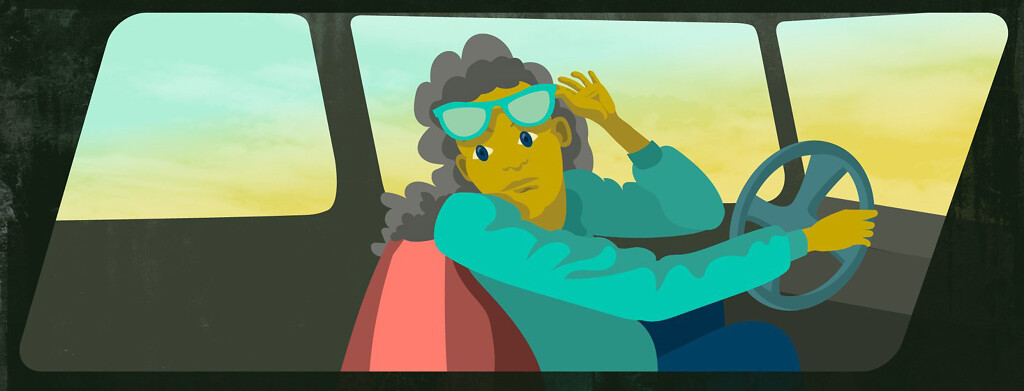Driving with Chronic Dry Eye
I live in rural Oklahoma in an official food desert area. The nearest store is 15 miles, and fresh food is very limited. That means that at least once a week, I have to plan a trip to the nearest town with a supermarket. It’s hard to believe, but for me that is 60 miles one way.
Driving is a real challenge
For the average person, a 60-mile drive is no big deal. My experience is not average. Six years ago, I was diagnosed with age related macular degeneration (AMD). Two years later I was diagnosed with chronic dry eye. Having these two conditions has made driving a real challenge for me.
My shopping trips require me to be extra diligent with my dry eye treatment regimen. For me, treatment includes beginning my day with a warm moist microwaveable eye pad to help melt the oils produced by the meibomian glands. I usually reserve the use of gel drops to bedtime use. They are long-lasting but cause a few minutes of blurring. On shopping days, I opt for gel drops. But I carry extra lubricant drops in case they are needed before I return home.
Getting in the car
Once in the car, I put on my wraparound-style polarized sunglasses. I find the Cocoon brand fit over style best for both my AMD and chronic dry eye. Finally, I am ready to head out shopping. I usually whisper a prayer to keep me, and others, safe as I drive. Yes, I am legal to drive in my state. I am always aware of my impaired vision and the need to take extra precautions.
Good driving days for me are bright and sunny. I try to avoid driving on overcast days or in rain or fog.
Blurry and double vision
Once on the road, I notice the blurring associated with both AMD and chronic dry eye. Road signs are next to impossible for me to read until very close. For this reason, I only drive in familiar areas.
The most unusual part of my driving experience is with double vision. It is different from other forms of double vision.
I have monocular double vision caused by my chronic dry eye condition. When I meet a car while driving, I see a second set of headlights superimposed above the headlights. This is sometimes referred to as “ghosting,” which often presents as a shadow that overlaps with the primary image. As your eyes dry out, the surface of your eye can become rough and irregular, and the tear film of your eyes dried out. This causes me both blurring and double vision.
Learning to deal
Initially the double vision was disconcerting. Fortunately I may only meet another car a few times until I reach my destination; I did say I live in a rural area.
Today, as I learn to manage my dry eye symptoms, I experience the double vision less often. I have learned to ignore those “ghostly” images, much as I do those pesky eye floaters. I am just happy to still be driving.

Join the conversation